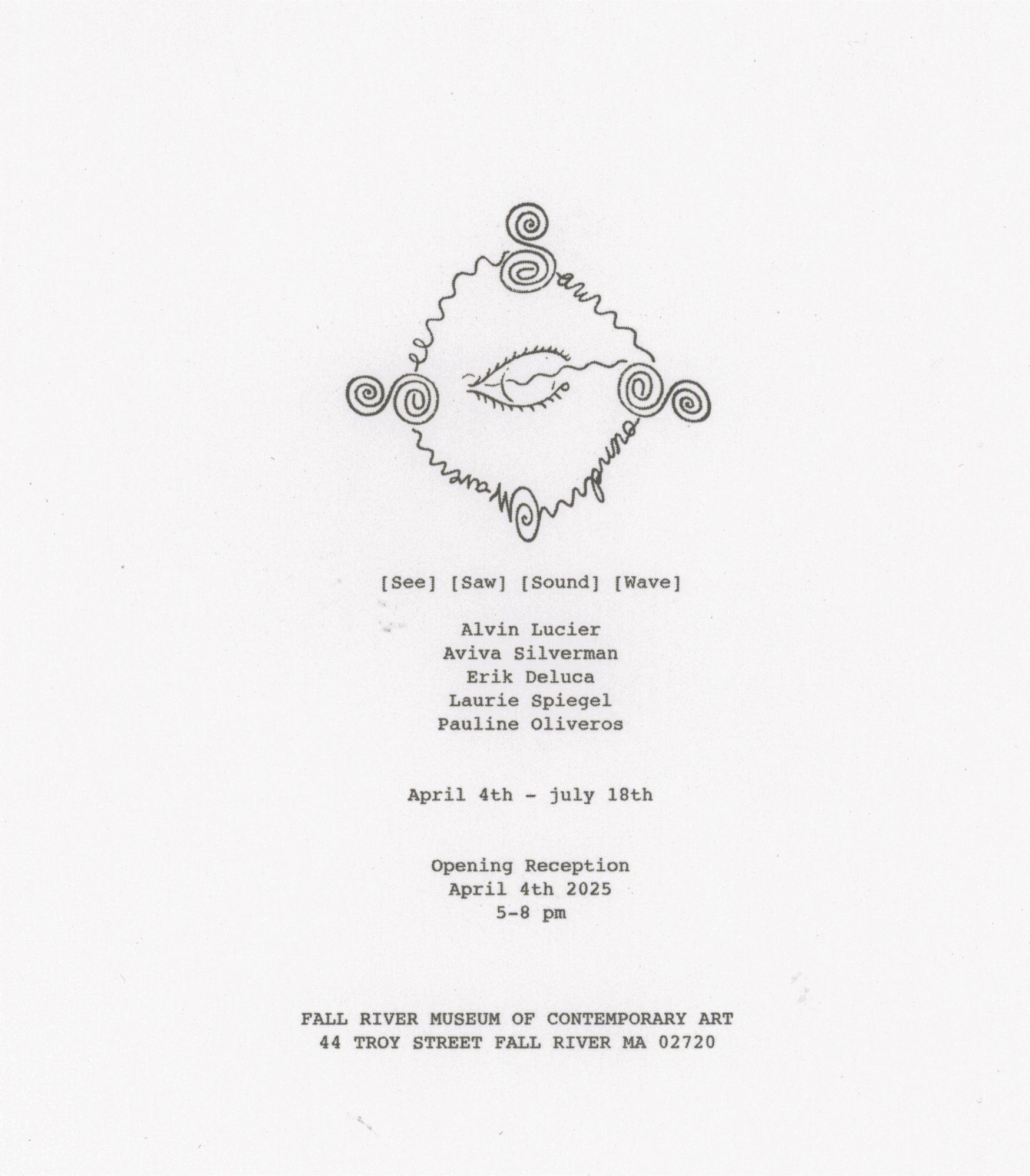-- Open by Appointment - email info@frmoca.org -- [See] [Saw] [Sound] [Wave]
-- Open by Appointment - email info@frmoca.org -- [See] [Saw] [Sound] [Wave]
[See] [Saw] [Sound] [Wave]
April 4th - July 18th, 2025
By Appointment until August 31st
Free & Open to the Public
Featuring work by:
Alvin Lucier, Aviva Silverman, Erik Deluca, Laurie Spiegel, and Pauline Oliveros
sound felt sensed wandering whilst wondering in
seen seeing seen in sine waves sing again
frequencing frequencies frequent and spin
feedback feeds back and back feeds back again
listening… hearing… heard heard hearing sound,
acoustic in acoustic sound waves spinning round…
Tik tok Mmmmm Humm, Klak bang swoosh boom
weeeeeOoooo ssss ffff nnn a ha! and a vroom.
Big Mother is watching, and not an angel moved a wing. The reflection is spatial, and the sound is physical. The room is an electronic environment, and you are the receiver—both left, right, and in stereo. Sounds are waves that spiral into the brain from the ear; listening takes place over time. Meaning is constructed based on what resonates and harmonizes. Without eyelids for our ears, we must learn how to truly listen.
[See] [Saw] [Sound] [Wave] spans a long and historical timeframe, grazing just the tip of the iceberg of giants whose sonic shoulders we stand on. By engaging with contemporary and historical practitioners, this exhibition attempts to fold the acoustic past into the present.
FR MoCA presents [See] [Saw] [Sound] [Wave], a multigenerational curatorial exercise bringing together artists working with sound, scores, acoustic space, and the phenomena of listening. Nestled within the exhibition are two whisper mirrors constructed from the same material as museum pedestals. These “mirrors” reflect sound and, based on the listener’s spatial relativity, amplify it in accordance with their acoustic environment. As the viewer moves amidst the space, they will encounter works by Aviva Silverman—scores of ants on train tracks paired with acoustic dampening textile panels featuring miniature train tracks—curated with the hope that they will operate as stations of contemplation and reflection.
Beyond the sound mirrors, three listening stations will feature works by historic artists Alvin Lucier, Pauline Oliveros, and Laurie Spiegel, with selections made by artist and composer Erik DeLuca. In his practice of art composition and pedagogy, DeLuca braids together sound, listening, and learning—encouraged by featured composer Pauline Oliveros—seeking to engage critical consciousness, as inspired by educator Paulo Freire. DeLuca has led location-specific, socially engaged sound art projects that will inform performances, listening sessions, and sound interventions in the space. His participation in this exhibition will expand on this practice and his time spent with fellow artist and collaborator Alvin Lucier.




